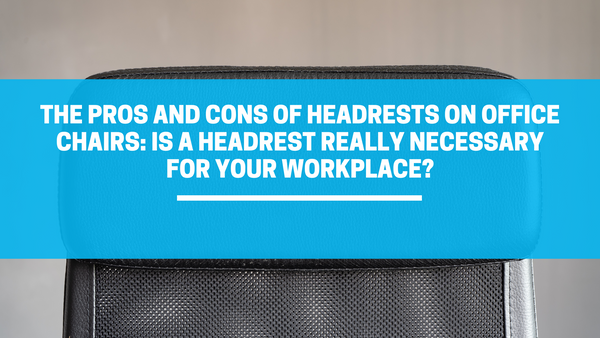
The Pros and Cons of Headrests on Office Chairs: Is a Headrest Really Necessary for Your Workplace?
When it comes to office chairs, headrests are often seen as a luxury feature, rather than a necessity. While they can provide additional comfort for those who spend long hours at a desk, they may not be the best choice for everyone. In this article, we will explore the pros and cons of headrests on office chairs and help you determine whether a headrest is right for you and your work environment.
The idea of adding a headrest to an office chair seems like a logical solution for increasing comfort, but in reality, headrests can actually have a negative impact on posture. While headrests may provide a place to rest the head and neck, they do not improve the overall posture of the body. In fact, the use of a headrest can actually lead to slouching and a more relaxed posture, which can cause strain on the neck and back over time.
Pros of Headrests:
- Provides additional comfort for neck and head
- Can be used for short naps or breaks during work
- Adds to the overall aesthetic of the chair
- Can be adjustable to better fit individual needs.
When sitting in an office chair, it's important to maintain good posture, keeping the spine in a neutral position and the shoulders back. This helps to reduce the risk of back pain and improve circulation. However, a headrest can encourage a more relaxed posture, causing the head to tilt forward and the shoulders to slouch. This can lead to tension in the neck and upper back, as well as decreased circulation.
The Cons of Headrests:
-
Interference with Work: For those who frequently need to look down at a computer screen or work surface, a headrest can be a hindrance. It can block the view and make it difficult to see the screen or work surface, leading to discomfort and decreased productivity.
-
Unnecessary Bulk: Office chairs with headrests can be bulkier and take up more space, making it difficult to fit into tight work areas.
-
Reduced Mobility: Headrests can also limit mobility, making it difficult to reach items on a desk or move around the chair.
Another drawback of headrests is that they can limit the range of motion of the head and neck. This can be especially problematic for people who need to move their head and neck frequently while working, such as those who work on a computer or engage in activities that require frequent head movement. The limited range of motion can cause strain on the neck and shoulders, leading to discomfort and pain.
In conclusion, while headrests may provide additional comfort for some, they do not improve posture and can actually have negative effects on the neck and back. It's important to consider the potential drawbacks of headrests when choosing an office chair, and to prioritize chairs that promote good posture and support the back and neck in the correct alignment.

